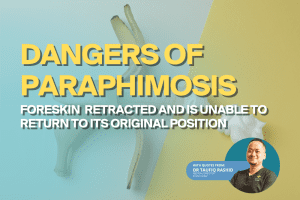Neonatal jaundice is a prevalent condition in newborns, characterised by the yellowing of the skin and the whites of the eyes.
This concise overview delves into the causes, implications, and the spectrum of treatments available for managing this condition effectively.
What is Jaundice?
Neonatal jaundice, or hyperbilirubinemia, is prevalent, with a significant number of newborns affected globally. It’s primarily due to the elevated total serum bilirubin (TSB), presenting as a yellowish discolouration of the skin, sclera, and mucous membranes. Various factors contribute to its onset, including Rh incompatibility, where antibodies from an Rh-negative mother attack the Rh-positive baby’s red blood cells, leading to hemolysis and elevated bilirubin levels. Additionally, conditions like glucose-6-phosphate dehydrogenase (G6PD) deficiency, hereditary spherocytosis, and factors like prematurity, breastfeeding difficulties, and certain genetic conditions increase the risk. Effective management strategies are crucial for preventing severe complications such as bilirubin encephalopathy.
Causes and Risk Factors of Neonatal Jaundice
In Southeast Asia, neonatal jaundice poses unique challenges, heavily influenced by both genetic predispositions and environmental factors. Conditions like G6PD deficiency, a genetic enzyme defect, and ABO incompatibility, where the mother’s and baby’s blood types clash, are significant contributors.
Additionally, factors such as low birth weight and infections increase jaundice risks. The diversity in genetic makeup across different ethnic groups in this region may affect the newborns’ ability to process bilirubin, alongside unidentified environmental contributors.
Singapore has seen success in virtually eliminating kernicterus, a severe complication of jaundice, through comprehensive newborn jaundice management programs. This includes public education, screening, and early treatment, highlights the effectiveness of targeted health interventions.
Implications of Untreated Neonatal Jaundice
Untreated neonatal jaundice can lead to severe and lifelong health issues. The most critical complication of high serum bilirubin levels is kernicterus, a type of brain damage that occurs when excessive bilirubin crosses the blood-brain barrier, potentially leading to cerebral palsy, hearing loss, vision problems, and intellectual disabilities.
The pathophysiology behind neonatal hyperbilirubinemia involves an increased production of bilirubin. This a natural by-product of the breakdown of red blood cells. This bilirubin binds to albumin for transport to the liver, where it’s supposed to be processed and made water-soluble for excretion. However, in newborns, especially preterm infants, this process can be inefficient due to several factors including the immature liver’s inability to process bilirubin, increased breakdown of red blood cells, and other factors such as infections or genetic conditions.
Physiological jaundice, which is common in most neonates, is usually harmless and resolves within two weeks after birth. However, when bilirubin levels rise excessively or if the jaundice is due to underlying pathology, it necessitates immediate medical intervention to prevent the bilirubin from reaching toxic levels that could result in kernicterus.
Conditions such as breastfeeding jaundice, where inadequate breast milk intake leads to dehydration and reduced bilirubin excretion, and breast milk jaundice, caused by substances in the breast milk that can increase bilirubin reabsorption, illustrate how varied the etiology of jaundice can be. Additionally, pathological jaundice can arise from hemolytic diseases, infections, or liver dysfunction, all of which require specific treatments to manage bilirubin levels.
Advances in Diagnosis and Treatment of Neonatal Jaundice
Recent advances in the field of neonatal jaundice diagnosis and treatment have focused on understanding the complex mechanisms behind bile flow and jaundice. Additionally, innovative point-of-care (POC) technologies improve screening and management.
Understanding the biological pathways and therapeutic targets for conditions like cholestasis is pivotal. Research has shed light on the synthesis and circulation of bile acids. It has identified key transporters and enzymes involved in hepatocellular transport and bile secretion. Such insights are crucial for devising new treatment strategies for jaundice. Specifically jaundice caused by cholestasis and other liver diseases.
In terms of diagnosis and treatment, neonatal jaundice typically sees phototherapy as a simple and effective method to reduce bilirubin levels. However, for a small proportion of babies with rapidly rising bilirubin levels that place them at risk of kernicterus, more urgent treatments are necessary.
Emerging technologies aim to address the limitations of current screening tools by developing low-cost, easy-to-use devices that can provide rapid test results. Several devices are under development, designed to improve the timeliness of diagnosis and management for neonatal jaundice. These devices promise greater accessibility, especially in remote areas where conventional hospital-based laboratory instruments are not available.
From Biological Insights to Diagnostic Breakthroughs
In summary, neonatal jaundice remains a significant concern due to its potential for severe complications if left untreated. The insights into the pathophysiology of jaundice have expanded our understanding, particularly regarding bile acid metabolism and the role of hepatocellular transporters. This knowledge is pivotal in developing targeted therapies for conditions such as cholestasis.
Moreover, the advent of POC technologies represents a significant leap forward in the timely screening and diagnosis of neonatal jaundice. These devices offer the promise of ease of use, affordability, and rapid results. This is crucial in preventing the adverse outcomes of untreated jaundice. However, the journey from innovation to clinical application involves rigorous validation. This ensures these emerging technologies can reliably support global health efforts in managing neonatal jaundice.
As we move forward, the integration of advanced biomedical research with innovative diagnostic tools will continue to play a critical role in improving outcomes for newborns with jaundice. The goal remains clear: to ensure early detection and effective management of neonatal jaundice, thereby safeguarding the health and well-being of the youngest members of our society.
References
- Ansong-Assoku B, Shah SD, Adnan M, et al. Neonatal Jaundice. [Updated 2023 Feb 20]. In: StatPearls [Internet]. Treasure Island (FL): StatPearls Publishing; 2024 Jan-. Available from: https://www.ncbi.nlm.nih.gov/books/NBK532930/
- Ho, N. K. (1992, January 1). Neonatal jaundice in Asia. Baillière’s Clinical Haematology. https://doi.org/10.1016/s0950-3536(11)80038-7
- Green, B., Burland, L., & Smith, C. (2014, April 23). A guide to neonatal jaundice. The BMJ. https://doi.org/10.1136/sbmj.g2836
- Dysart, K. C. (2024, February 21). Neonatal Hyperbilirubinemia. Merck Manuals Professional Edition. https://www.merckmanuals.com/professional/pediatrics/metabolic,-electrolyte,-and-toxic-disorders-in-neonates/neonatal-hyperbilirubinemia
- Chen, H., Wu, S. H., Hsu, S. H., Liou, B., Chen, H., & Chang, M. (2018, October 26). Jaundice revisited: recent advances in the diagnosis and treatment of inherited cholestatic liver diseases. Journal of Biomedical Science. https://doi.org/10.1186/s12929-018-0475-8
- Mitra, S., & Rennie, J. M. (2017, December 2). Neonatal jaundice: aetiology, diagnosis and treatment. British Journal of Hospital Medicine. https://doi.org/10.12968/hmed.2017.78.12.699
- Thomas, M., Greaves, R. F., Tingay, D. G., Loh, T. P., Ignjatović, V., Newall, F., Oeum, M., Tran, M. T. C., & Rajapaksa, A. (2022, February 21). Current and emerging technologies for the timely screening and diagnosis of neonatal jaundice. Critical Reviews in Clinical Laboratory Sciences. https://doi.org/10.1080/10408363.2022.2038074













